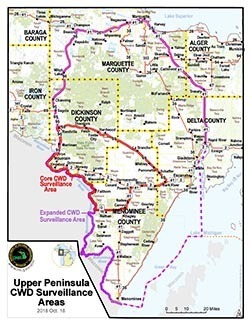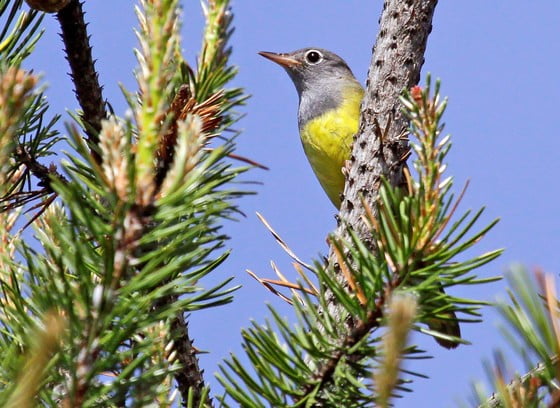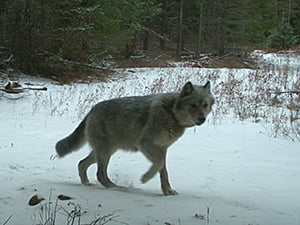
Except within its chronic wasting disease surveillance areas, the Michigan Department of Natural Resources has agreed to issue supplemental deer feeding permits in the southern part of the Upper Peninsula.
The action comes with average U.P. snow depths measured across the region nearly double that of a 15-year average for late February and March.
Feeding deer large quantities of food to supplement natural winter food resources – termed “supplemental feeding” – is allowed by permit in the northern U.P. counties beginning in January each year.
This type of feeding differs from “recreational feeding,” which is limited daily to 2 gallons of feed, placed within sight of a home or camp. Recreational feeding is allowed year-round across the U.P.
In southern U.P. counties – which typically exhibit milder winter weather conditions – free permits are issued for supplemental feeding dependent on weather conditions.
“The DNR uses total accumulated snow as an index of the severity of the winter,” said Terry Minzey, DNR U.P. regional wildlife supervisor. “In typical winters, impacts to the deer herd in the southern part of the region, based on snow accumulation measurements, can be forecasted by mid-January.”
 Minzey said when conditions suggest the potential exists for significant winter deer mortality, regulated supplemental feeding is authorized by the DNR. This winter, the early part of the winter was fairly moderate, but conditions deteriorated in February. Minzey said when conditions suggest the potential exists for significant winter deer mortality, regulated supplemental feeding is authorized by the DNR. This winter, the early part of the winter was fairly moderate, but conditions deteriorated in February.Therefore, supplemental feeding permits are being issued in the southern U.P., except within chronic wasting disease core and expanded surveillance zones set up last October, after a doe tested positive for the disease in Dickinson County’s Waucedah Township. As of March 4, there have been 56 days this winter with greater than a foot of snow accumulated on the ground in the U.P. “We are monitoring deer in select areas,” said Chad Stewart, DNR deer, elk and moose management specialist. “At this time, most of the deer across the U.P. seem to be in fair shape.” More snow is forecast for the region this weekend as temperatures warm, with the potential for rain and snow next week. Weather forecasters are predicting the snow pack to last on the ground into April, with temperatures trending in long-term forecasts to remain below average. Stewart said peak winter mortality typically happens from late March through early May, and the factor most often attributed to high winter deer mortality is the length of the season. |
 “Though the intensity of a winter can play an important role in deer survival, the length of winter before spring green-up is often the most critical factor,” Stewart said. “At this point, it is too soon to know whether this winter will have a high negative impact on the deer herd.” “Though the intensity of a winter can play an important role in deer survival, the length of winter before spring green-up is often the most critical factor,” Stewart said. “At this point, it is too soon to know whether this winter will have a high negative impact on the deer herd.”The DNR will continue to monitor the situation. “Some deer have already succumbed to the winter; this is not uncommon and occurs every year,” Stewart said. “The DNR has more than 250 animals collared presently in the U.P., so if a large deer mortality event does occur, we will have an understanding of the magnitude.” Stewart said it is important to remember the deer herd in the U.P. can suffer losses naturally with extreme winter conditions. Difficult winters have negatively impacted herd numbers previously – notably during the mid-1990s – and are expected to impact herd numbers in the future. A lack of available high-quality deer wintering habitat remains a factor limiting the deer herd in the U.P. “Extreme winter conditions can highlight just exactly how important our deer wintering complexes are in aiding survival of the U.P. deer herd,” Minzey said. “The department has recognized the importance of this habitat and is working collaboratively with sportsmen’s groups, private landowners and others on identifying, creating and managing this habitat to help mitigate the impacts of severe winters.” Supplemental deer feeding permits are available by contacting DNR offices located in Baraga, Marquette, Crystal Falls, Escanaba, Newberry, Sault Ste. Marie and Shingleton (Cusino).For more information on chronic wasting disease in Michigan, visit Michigan.gov/CWD. Find out more about white-tailed deer and deer hunting at Michigan.gov/Deer. |

